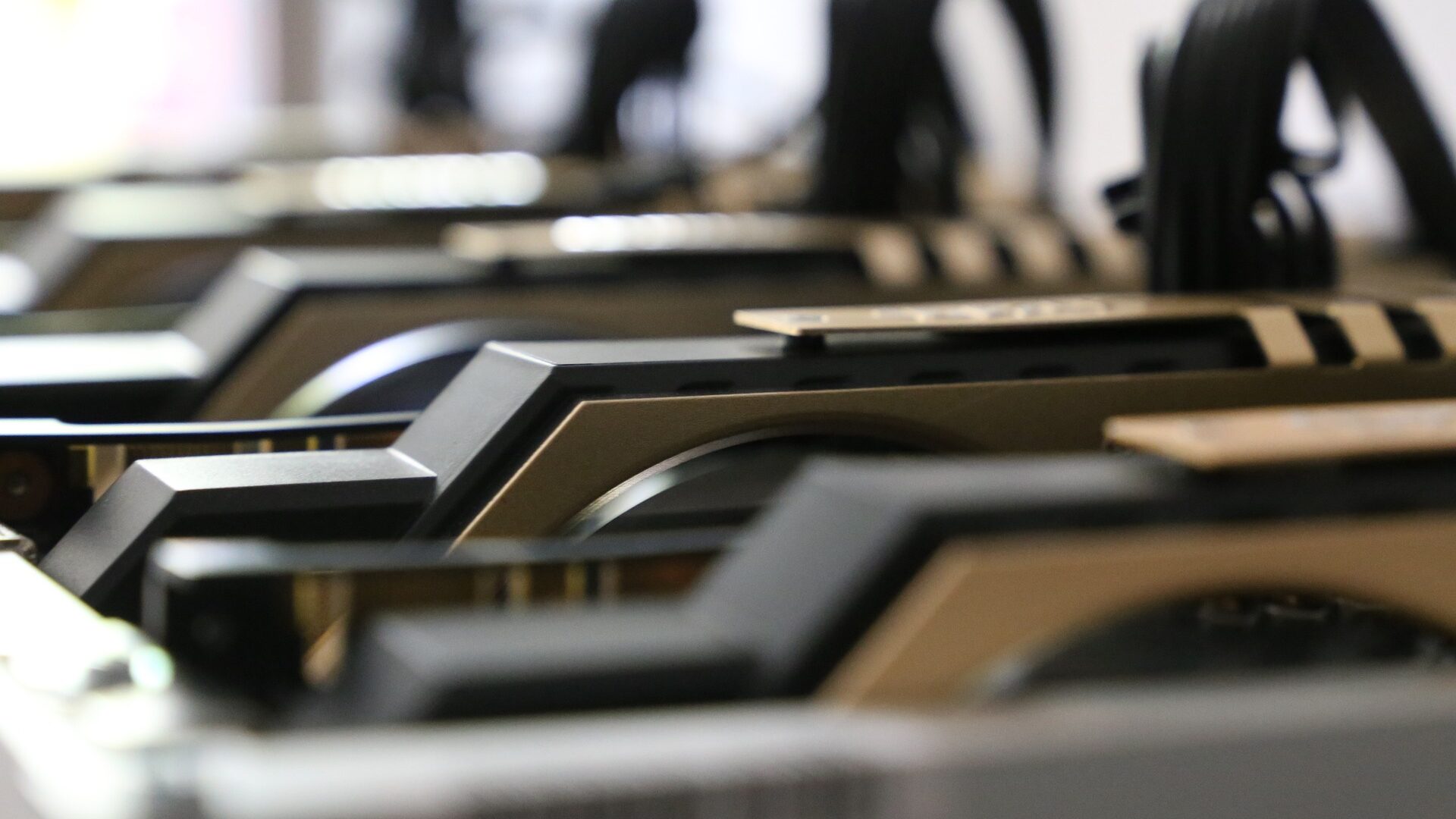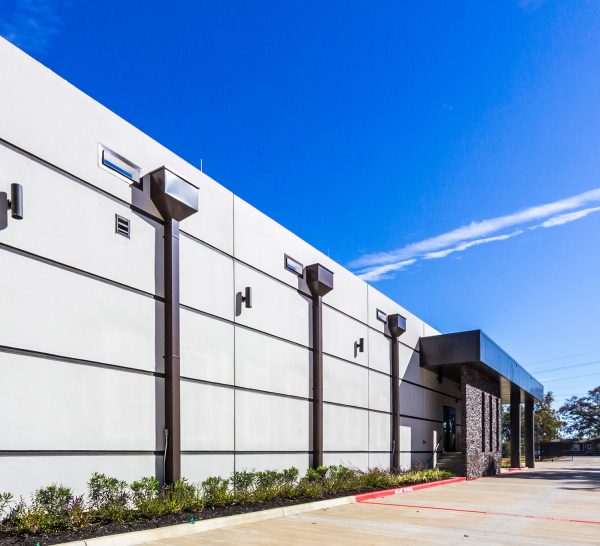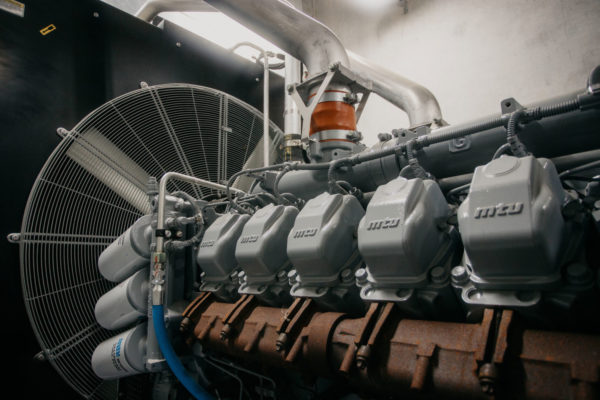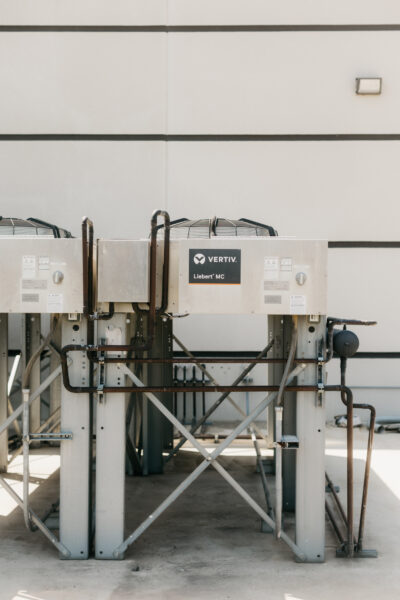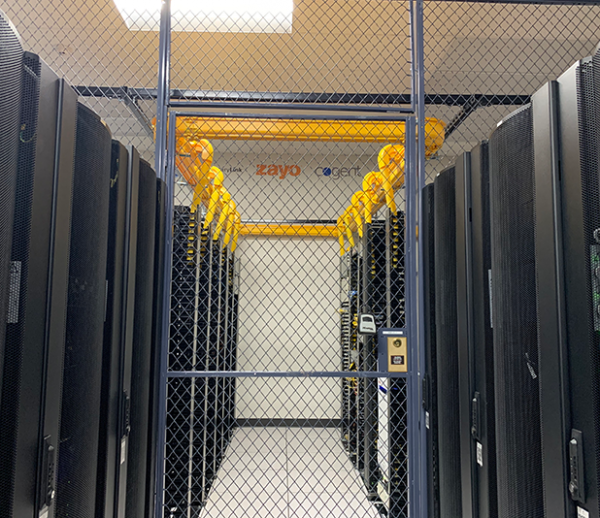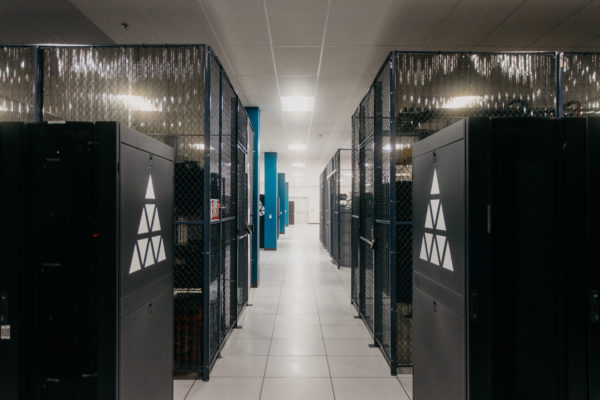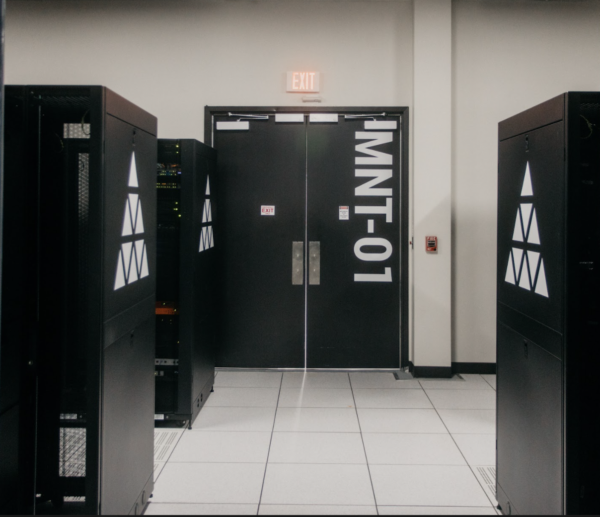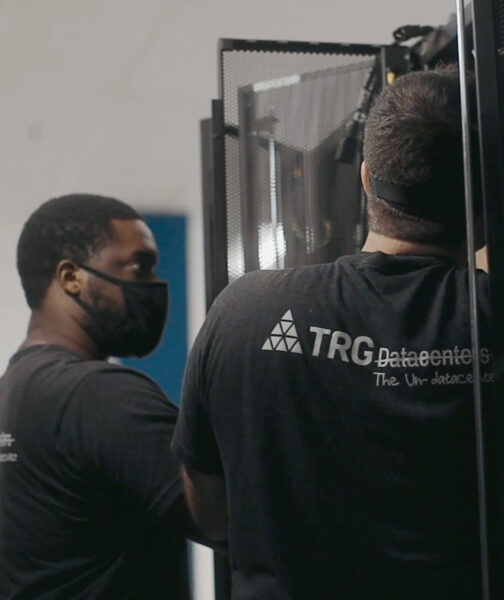Deep learning is a term deeply embedded in the modern, technologically advanced world, thanks to the prowess of AI. With groundbreaking innovations on the daily, companies are using AI to improve efficiency and analysis daily. In fact, a recent research performed by Exploding Topics shows that 83% companies have the use of AI as an utmost priority in their planning and strategic decision-making.
It goes without saying that you don’t want to be a part of the other 17%. As of now, it’s essential to include AI for strategic purposes in your business. And if you are ready to revolutionize your business with artificial intelligence, let’s take a moment to take a look at the prerequisites.
For deep learning, artificial intelligence, or machine learning, the first thing you need is a robust machine—or, more accurately, a powerful GPU.
Deep learning requires intense computational requirements, and your choice of GPU is going to impact how your business is going to react to this massive change. With so many choices out there, choosing the best GPU for AI is demanding. There are numerous things that differentiate between a GPU that is good for AI and a one that is not.
For instance, factors like RAM, cores, and tensor cores all play a crucial role. But even if you manage to pick the top-performing GPU, is it really the most cost-effective option for your business?
There are countless more questions to consider, and we’re here to help. In this guide, we are going to learn how to choose the best GPU for AI and what are the impacts of GPU in deep learning.
Of course, running such powerful computing systems requires a lot of energy, and not every business has the capacity to do it in-house. Therefore, businesses rely on data centers around the world to host their machinery. We‘re also going to see how you can use our GPU Colocation services to implement artificial intelligence in your business.
But before we evaluate the GPUs for AI and begin choosing the best one, let’s take a moment to understand the fundamentals of GPU and what makes it the best for deep learning and artificial intelligence.
What are GPUs?
Graphics Processing Units (GPUs) are processors specially designed to handle demanding computational tasks. Initially, they were created for handling complex graphics in video games and 3D rendering. Considering their impressive power to perform laborious tasks quickly, people started leveraging them for high-performance computing tasks and other deep learning projects as well.
The term GPU is sometimes used interchangeably with graphics cards. However, it is important to notice, GPU is a chip placed inside a graphics card. In fact, GPUs can be found in several shapes and sizes:
-
- Discrete GPUs—As the name suggests, discrete GPUs are separated from the processor and have their own dedicated memory. While performing, they consume more power and produce more heat, requiring powerful cooling systems to work efficiently.
- Integrated GPUs — After discrete GPUs, manufacturers combined the power of CPUs and GPUs and introduced a new even powerful chip called iGPU. The first players of iGPUs were Celeron, Core lines, and Pentium. A type of iGPU (SoC) is also used in smartphones.
- Virtual GPUs — Virtual GPUs (vGPUs) allow a single physical GPU to be shared among multiple virtual machines, which is especially useful in cloud environments. This setup helps businesses with high computational needs, like deep learning tasks, without the upfront costs of physical infrastructure.
Components of a GPU
As we discussed, there are several components that make a GPU fast and resilient enough to work for high-power computation tasks, such as machine learning, deep learning, gaming, blockchain, etc. Let’s now look at the basic fundamentals of GPU.
- Cores — Cores or processors execute calculations and help GPU perform dedicated tasks. In NVIDIA GPUs, these are called CUDA cores, whereas, in AMD GPUs, they are called stream processors.
- VRAM — VRAM or Video Ram helps GPUs store textures, 3D models, and frame buffers. A few common types of modern VRAM includes, graphics double data rate (GDDR6) and HBM (high bandwidth memory.)
- Bandwidth — The bandwidth connects the VRAM with Cores. The higher the bandwidth, the faster the data is transferred between the GPU and its memory.
- Shading Units are lifesavers for gamers. Shaders help calculate the colors, brightness, and other aspects of a pixel. In essence, they’re super useful for games and 3D image processing because they help 3D objects interact with sunlight, darkness, reflections, etc. For example, the sun reflecting on your gaming character and forming a shadow in the opposite direction is the shading processor’s magic.
- Cache — Cache is a technology also used by web browsers to save a cached copy of your frequently visited websites to avoid loading the same components again and again to reduce potential load times. Similarly, a GPU has multiple levels of cache (L1, L2) to store frequently accessed data close to the cores, reducing access times.
- Render Outputs — Render outputs (ROPs) convert the processed data from the GPU into the pixels that create the final image on your screen, like game graphics or 3D models. They’re what make the visual display happen.
Another vital component for GPUs that you should look for is…Tensor cores. AI-focused tensor cores GPUs were introduced by NVIDIA in their Volta architecture in 2017. Yes, these are different from CUDA cores. These both possess different qualities and offer different benefits. Let’s take a moment to understand these CUDA cores, Tensor cores differences. Here’s how they differ:
CUDA Cores
A GPU has thousands of Compute Unified Device Architecture (CODA) cores. These cores offer fantastic precision in their work. Simply put, their parallel processing qualities help perform complex calculations in a blink, allowing scientists and engineers to create or tweak algorithms easily and quickly. These cores work amazingly for general-purpose GPU computing (GPGPU) or for tasks that require double-precision floating-point accuracy.
Tensor Cores
These are advanced cores invented by NVIDIA specifically designed for artificial intelligence related tasks. These are fantastic for training deep learning models since they require vast amounts of data with precision. Moreover, tensor core’s high parallel processing qualities make it ideal for your typical AI tasks. These cores are better optimized for deep neural networks as well. They make the process of training much faster due to their excellent approach to matrix operations and mixed precision.
These cores are 4X faster in training generative AI models and provide a 30X increase in inference performance.
Verdict: Combine the power of CUDA cores and Tensor Cores. Simply put, use GPUs like the NVIDIA A100. This is an advanced machine that provides 20X higher performance and can be partitioned into seven individual GPU instances that you can adjust and use according to your needs.
According to NVIDIA:
“A100 provides up to 20X higher performance over the prior generation and can be partitioned into seven GPU instances to dynamically adjust to shifting demands. The A100 80GB debuts the world’s fastest memory bandwidth at over 2 terabytes per second (TB/s) to run the largest models and datasets.”
How Do GPUs Work?
Now that you understand the components of GPU, let’s see how these components work together to make parallel processing possible making GPUs as powerful as they are.
Common GPUs can have thousands of cores, which they can use simultaneously to break complex tasks into small individual tasks that can be performed altogether by multiprocessors.
This breakdown makes it easier to perform high computational tasks instantly.
Another thing GPUs excel at is workload distribution. They evenly distribute the tasks so no cores struggle to complete their dedicated tasks. This also produces less heat and eventually costs less in management costs.
But still, running a GPU requires robust servers that can be very cost-intensive. A better and cost-effective alternative is using data centers. For reliability, you can rely on our Houston Data Center for your computational hosting needs. Our 20+ years of experience allow us to swiftly handle your needs so you can focus entirely on implementing AI in your business.
GPU in AI: Artificial Intelligence and GPU
AI is everywhere around you. Your smartphones are AI-powered. You take a selfie, and AI helps you enhance your images. You go through an airport, and surveillance cameras scan you from head to toe without you having to stop somewhere. There are a thousand more everyday uses of artificial intelligence in your day-to-day life, and GPUs go hand-in-hand with them.
In this section, we are going to see the use cases and advantages of GPU in AI and why you simply cannot use CPUs for complex AI tasks.
GPU in AI: Use Cases
Here are four use cases of GPU in AI that we use in our everyday life:
National Language Process (NLP)
NLP enables computers to comprehend and understand human language and compile answers that humans can resonate with and are generally easier to understand. Large language models (LLM) like ChatGPT and GPT4 use NLP to understand and process our language. Otherwise, we would have been required to input codes in machine language, but thanks to NLP and AI, we can communicate with chatbots just as we can with any other fellow human.
Video Processing
Their amazing powers enable better video processing, which is highly valuable for video encoding, decoding, and streaming. We use video processing while binge-watching TV shows or for video conferencing or video calling.
Machine Learning
Machine learning is when computer systems understand and adapt according to the circumstances without further instruction—or prompts—from humans. These computers use algorithms and statistical models to analyze and understand patterns from the given data. Considering the demanding processors this entire process requires, GPUs provide the ultimate solutions for machine learning projects.
Augmented Reality
Augmented reality, which is usually useful in gaming and online shopping is also usually powered by GPUs. Google Lens is one of the most prominent examples of augmented reality that helps you identify and understand objects in an image.
GPU in Deep and Machine Learning
Deep learning is a subset of machine learning. As you know, machine learning and deep learning are high-computational tasks that require extensive power and robust servers to function properly. As we learned, the latest NVIDIA technology and tensor cores are designed with artificial intelligence in mind. Here’s why and how GPU in deep learning and machine learning is a must:
Parallel Processing
First and foremost, their parallel processing qualities. We have already discussed how GPUs break super complex tasks into easy and small tasks that thousands of cores simultaneously work on to complete an operation quickly and more efficiently.
Training an artificial model requires tons of image data, video data, text data, and tabular data. In most cases, all of them are combined to allow the model access to more data, so it can make better predictions and construct better answers to your queries.
With deep learning models being incorporated everywhere nowadays, models also require pattern recognition, classification, object tracking, object detection, sentiment analysis, and the list goes on and on. Without parallel processing, these models would require years to train. This speed is highly required for tasks that require quick decision making, such as autonomous vehicles and real-time language translations.
GPU and parallel processing make it possible to quickly train these models without excessive energy consumption and time waste.
High Bandwidth
For a recap, the higher the bandwidth, the faster the data processing. Considering the huge amounts of data required for training AI and the high demand for faster data processing, one can’t neglect the essence of high bandwidth. Thus, CPUs don’t work as well as GPUs when it comes to deep or machine learning—more on that later.
Bulk Processing and Even Workload Distribution
GPUs process data in bulk while training. This reduces the overall workload and leads to faster performance. To make it even better, we already learned a GPU’s even workload distribution qualities, which allow them to process batches rapidly while thousands of CUDA cores evenly work together to get it done.
GPU’s Minimum Requirements for Machine or Deep Learning
Taking everything into account such as parallel processing, high-bandwidth, even distribution, and everything else, it is prominent that GPUs are highly suitable for AI tasks. But, what if your GPU is just not powerful enough for these advanced projects?
Here are the minimum requirements if you are planning to train AI model hardware or other such deep learning frameworks:
- CUDA Cores Compatibility — Although tensor cores are designed for AI-related tasks, that doesn’t mean CUDA cores can not be a basic alternative. These cores can not perform high-intensity tasks but are a good substitute for the initial stages of your business.
- VRAM — At least 4GB of VRAM is absolutely necessary for basic deep-learning projects. However, if you plan on taking on bigger projects, you must aim for a minimum of 6 to 8 GB VRAM.
- Compute Capability — Basically, the total computing capabilities of your GPU. A higher capability allows for easier handling of various functions and performance optimization. The minimum capability requirements are 3.5 but aim for 5.0 or higher if you have mega projects on your to-do list.
- Power Supply — The Power Supply Unit (PSU) that supplies power to your entire system. It should be at least 450W.
- Cooling Systems — Last but not least, you should ensure your system has proper cooling systems. Some GPUs come with built-in advanced cooling. Apart from that, you might also require external cooling devices to provide optimal temperature to run GPUs.
If you are short on something, you can either level up with a new and more powerful GPU or if your GPU is not running at its full potential, you can make these power configurations for AI computing in order to ensure your GPU is running as it should:
- Dust it Off: Let’s start with the easiest solution. Simply dusting off your GPU may positively impact its performance especially if you have not done that for a considerable amount of time. A few dust particles on the cover are absolutely normal, but if your processor is indulged in thick layers of dust blocking ventilation, that is the culprit.
- Update Your Drivers: Updating your drivers can also impact your GPUs performance. Timely look for updates from the vendor’s website manually. Additionally, configure the drivers according to your needs rather than relying on your predefined settings.
- Utilize AI-enhancements Settings: Most big fishes like NVIDIA or Intel have built-in AI-powered upscaling algorithms in their latest models. Such algorithms include DLSS, FSR, or XeSS. These upscaling technologies force the processor to render at a higher resolution at lower resource cost with the help of AI. Another fantastic AI-powered feature is advanced frame generation, which adds more frames in between, offering a better and clearer experience. This can come in handy for those who use GPUs for tasks like video editing.
It’s worth noting that these tweaks are not going to cause a dramatic change, but they do contribute to the overall performance. If your processors are still not enough, you can use an AI colocation service which means renting a data hall that hosts your high-density AI applications or devices on a remote server, allowing you the freedom to utilize high-end GPUs at a fraction of the prices as compared to installing your own physical infrastructure.
We have 20+ years of experience in this field, and a number of data centers spread far and wide. For instance, teams from or around Houston can utilize our Houston data center, for their data processes.
Why Your Typical CPUs Can’t Work for Deep Learning
Using CPUs for machine and deep learning tasks is not a very good option. Unlike GPUs, CPUs do not have parallel processing properties, at least not to that extent. Let’s dive a little deeper into this GPU vs CPU for AI competition with a comparison table.
|
Aspect |
GPUs |
CPUs |
|
Parallel Processing |
GPUs have fantastic parallel processing qualities. GPUs can perform complex tasks quickly by breaking them into small tasks that are done simultaneously by thousands of cores. |
CPUs do not possess parallel processing qualities and are required to do complex tasks in a sequence. Conserving more energy and taking more time, which is less efficient than using a GPU. |
|
Cores |
GPUs can have thousands and thousands of cores that can accelerate a task by working together. |
Since common computing tasks like browsing the internet do not need more than 2-4 cores, thus, CPUs do not have a lot of cores, usually they have a maximum of 64 cores. |
|
Speed and Performance |
Since deep learning requires vast amounts of data to process in order to train the AI model efficiently, GPUs thrive at that with their parallel processing and other optimization qualities. |
CPUs are usually slower than GPUs because of their inability to work multiple processors at a time. Hence they are not the best option for AI programs and will take significantly more time to train AI models and perform other complex tasks. |
|
Energy Consumption |
GPUs take more energy to run than CPUs, but this can be overlooked, considering GPUs can perform tasks significantly faster than a CPU, hence using less running time. |
CPU consumes less energy than GPUs but for complex tasks they can actually end up consuming more considering their multi-tasking incapabilities. |
|
Cooling Systems |
Many GPUs come equipped with advanced cooling features. |
CPUs may require additional external cooling devices or features, especially when working on a laborious task. |
Best GPU for Deep Learning
Still unsure about what deep learning GPUs to choose for your deep learning projects? We can help with that as well. Here’s what you need to know before you finalize a GPU.
First and foremost, you must understand your requirements. Someone looking for a robust GPU for gaming would have completely different requirements to look for in a GPU. Therefore, make sure your vision is clear before proceeding with a final decision.
Best High-End GPUs for Deep Learning
We are going to look for the key aspects like VRAM, tensor cores, CUDA cores, and finally cost.
1. NVIDIA A100
We already talked about the computational power of this giant while discussing tensor cores. Usually used in enterprises, A100 is one of the best solutions for mega projects or enterprise applications. It is based on Ampere architecture and has dedicated features for deep learning.
Key features:
- Tensor Cores: 3rd generation Tensor Cores suitable for mixed-precision training.
- Memory: 40 or 80 GB HBM2e memory.
- CUDA Cores: 6912 CUDA cores.
- Performance: Supports FP64, FP32, FP16, and INT8 computations
- Cost: Around $9000
2. NVIDIA RTX 4090
One of the best consumer-level GPUs for AI related tasks. It provides fantastic performance for model training and is suitable for individuals or small businesses just starting with AI integration. It is based on Ada Lovelace architecture.
Key Features:
- Tensor Cores: 4th-generation Tensor Cores
- Memory: 24 GB GDDR6X memory, in essence, ample for most deep learning tasks.
- CUDA Cores: 16384 CUDA cores.
- Performance: Deep Learning Super Sampling (DLSS 3.0) which can be fantastic gaming and video processing.
- Cost: Starts from $1599
3. NVIDIA Tesla V100
Some believe this one does not belong in this list because it is based on an older architecture, Volta. However, the truth is, it is still highly valuable and super effective for deep learning tasks. In fact, this one is a high-end GPU specifically designed for artificial intelligence.
Key Features:
- Tensor Cores: As discussed, it is based on older models and has 1st generation Tensor Cores.
- Memory: 16 or 32 GB HBM2 memory.
- CUDA Cores: 5120 CUDA cores.
- Performance: Uses NVLink which is a technology developed by NVIDIA that allows rapid communication between multiple GPUs, at higher bandwidth as compared to traditional PCIe connections.
- Cost: $5,989 for 32 GB
Here’s how these three giants compare:
|
GPU |
Tensor Cores |
CUDA Cores |
Memory |
Cost |
|
NVIDIA A100 |
3rd generation |
6912 |
40 or 80 GB HBM2e |
$9000 |
|
NVIDIA RTX 4090 |
4th generation |
16384 |
24 GB GDDR6X |
$1599 |
|
NVIDIA Tesla V100 |
1st generation |
5120 |
16 or 32 GB HBM2 |
$5,989 — for 32 GB |
Best GPUs for Entry Level Tasks
If you have budget constraints or are just submerging in deep learning, you can get started with the following GPUs. Please note these may not provide optimal experience for complex tasks. We advise scaling up with your needs. These options provide sufficient power and features for testing, allowing you to consciously upgrade your setup along the way.
1. NVIDIA Titan V
This handy solution can be super useful for scientists and researchers. Similar to Tesla V100 it is also based on Volta architecture. However, the limited specification allows it to be more pocket friendly.
Key Features:
- Tensor Cores: 640 Tensor Cores.
- Memory: 12 GB HBM2 memory.
- CUDA Cores: 5120 CUDA cores.
- Cost: $699
2. NVIDIA Titan RTX
Built on Turing architecture, and offers remarkable performances while also being unbelievably affordable.
Key Features:
- Tensor Cores: 576 Tensor Cores.
- Memory: 24 GB GDDR6 memory.
- CUDA Cores: 4608 CUDA cores.
- Cost: around $800
3. NVIDIA GeForce RTX 2080 Ti
NVIDIA GeForce RTX 2080 Ti is a fantastic GPU for consumers. Like Titan RTX this one is also built from Turing architecture and is one of the best choices for those starting out with AI or deep learning.
Key Features:
- Tensor Cores: 544 Tensor Cores.
- Memory: 11 GB GDDR6 memory.
- CUDA Cores: 4352 CUDA cores.
- Cost: $449
Here’s how these three compare:
|
GPU |
Tensor Cores |
Memory |
CUDA Cores |
Cost |
|
NVIDIA Titan V |
640 Tensor Cores |
12 GB HBM2 |
5120 |
$699 |
|
NVIDIA Titan RTX |
576 Tensor Cores |
24 GB GDDR6 |
4608 |
Around $800 |
|
NVIDIA GeForce RTX 2080 Ti |
544 Tensor Cores |
11 GB GDDR6 |
4352 |
$449 |
Key Takeaways
The essence of GPUs for deep learning is prominent. Due to their parallel processing qualities, high-bandwidth and their abilities to evenly distribute work to enhance efficiency makes GPUs the best for deep and machine learning. GPUs can exceptionally perform tasks that CPUs could never.
The main components that you should look for in a GPU are cores, VRAM, bandwidth, shading units, cache, and render outputs.
GPUs go hand-in-hand with AI, and AI has been our companion for almost as long as we can remember. It is used in machine learning, surveillance, autonomous vehicles, video processing, augmented reality, and much more.
If you want to choose a GPU for deep learning and don’t want to spend a fortune, you can go for the NVIDIA Titan V, it is an affordable solution and possesses enough capabilities for basic to medium level AI tasks. Conversely, if you want to buy it for an enterprise, or you are alright with trading heaps of cash with performance, then the NVIDIA A100 or NVIDIA RTX 4090 could be the best choice.
Ready to elevate your business through AI with our expert data center solutions? Contact us today to learn more!
How TRG Data Centers Can Help You With AI Implementation
The total costs of running a high-end GPU can be exceptionally high. Therefore, we recommend getting help from reliable data centers like ours. We offer reliable data center services that are sure to keep your business up and running 24/7. In our 20 years of experience, we have helped thousands of businesses of all sizes.
Another notable benefit…the uptime. We promise high availability and 100% uptime for your business. Additionally, we can grow together! Simply put, you can start small and scale up according to your business needs.
To better understand data centers, you can pruse our guide on the role and purpose of data center GPUs.
Frequently Asked Questions
What GPU is used for deep learning?
Most GPUs can be used for deep learning as far as they fill the basic requirements. These requirements include CUDA core compatibility, VRAM of 4 GB, compute capabilities of 3.5, power supply of at least 450W, and sufficient cooling systems so it can work efficiently.
Apart from that, it depends on your preferences and budget. If you want performance, you can try the NVIDIA RTX 4090, which has 4th-generation Tensor Cores. However, if you are tighter on budget, you can go with any cheaper option that provides basic functionalities.
Is it worth buying a GPU for deep learning?
Definitely! Buying a GPU for deep learning is a must, especially if you plan on training large models. Due to parallel processing capabilities, CPUs are not suitable for deep or machine learning tasks.
Is RTX or GTX better for deep learning?
Both RTX and GTX work exceptionally well for deep learning. However, RTX takes the edge due to their specialized solutions specifically designed for AI tasks. Additionally, RTX have other advanced features such as ray tracing, which indicates the advanced architecture of these AI-centered cards.
What is the best GPU for deep learning in 2024?
Considering the specs, NVIDIA H100 NVL provides 7.8 TB/s bandwidth and 188 GB HBM3 memory. This enterprise-level GPU is the best for deep learning.
Looking for GPU colocation?
Deploy reliable, high-density racks quickly & remotely in our data center
Lease the most reliable GPUs
Our partners have B200s and L40s in stock, ready for you to lease today
